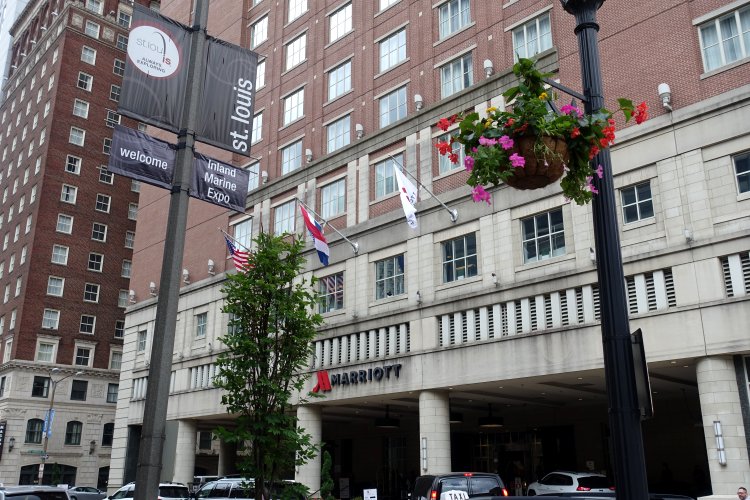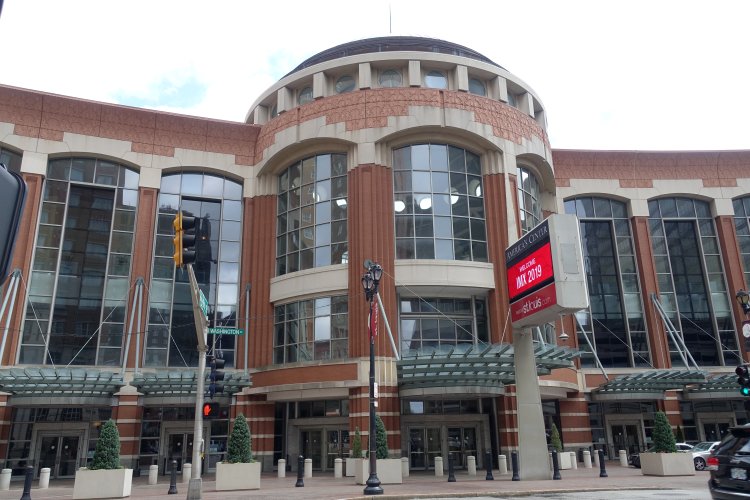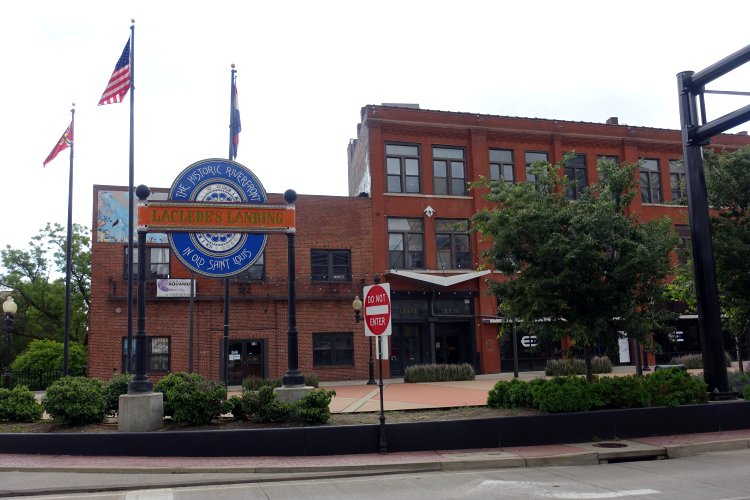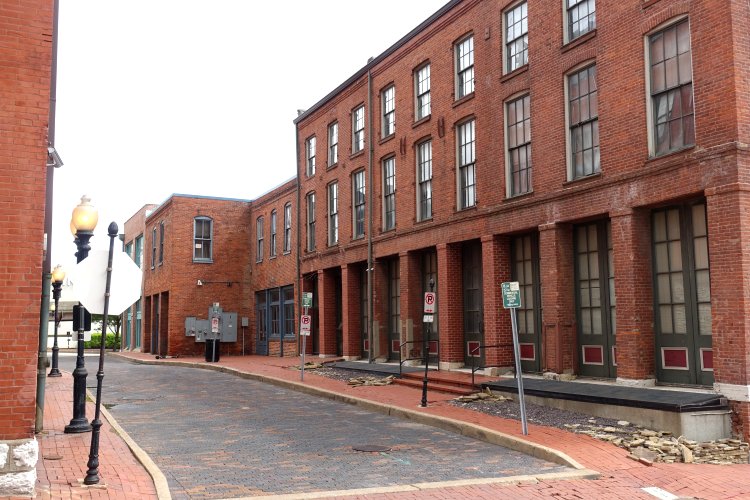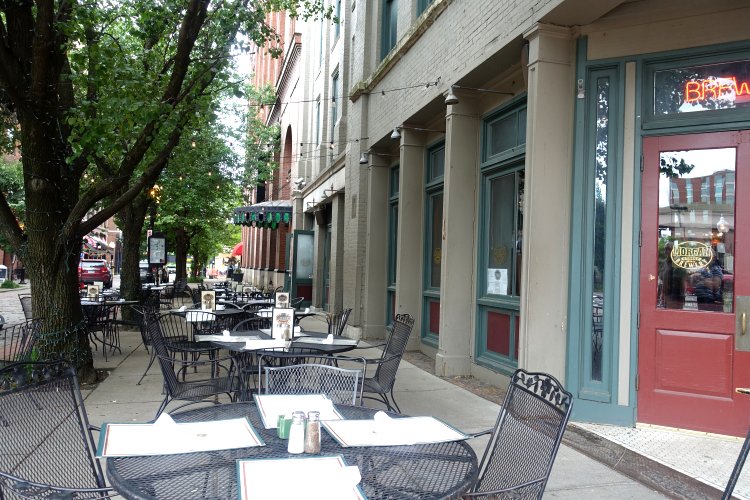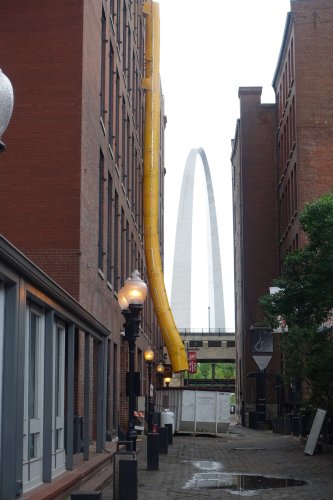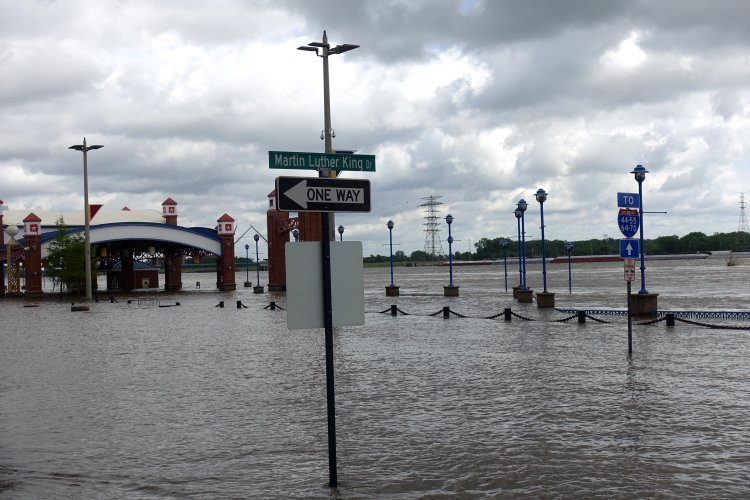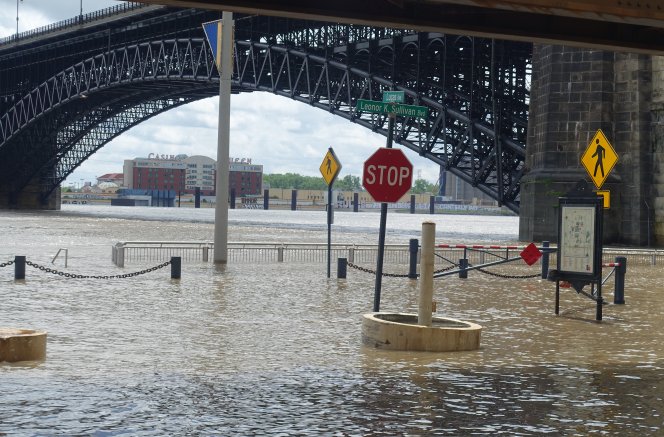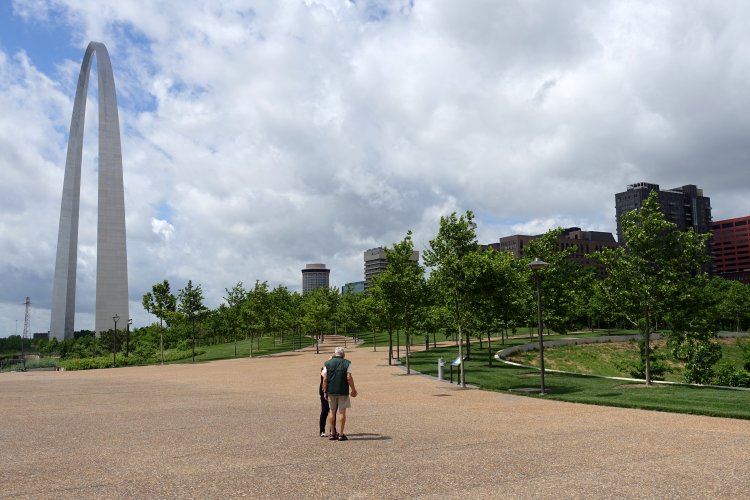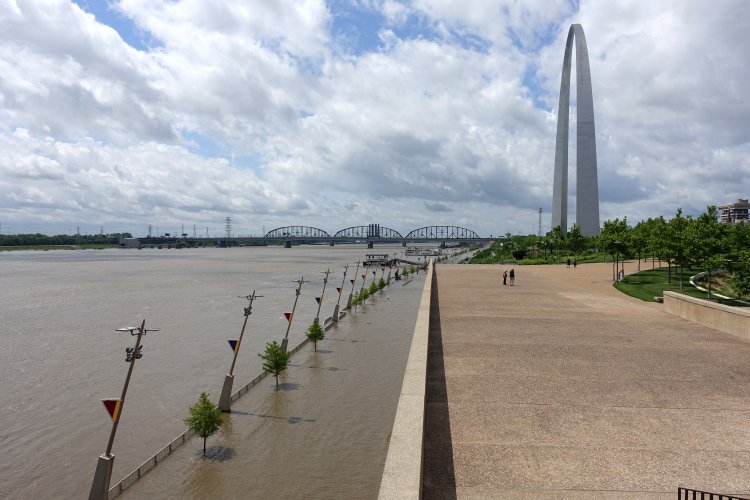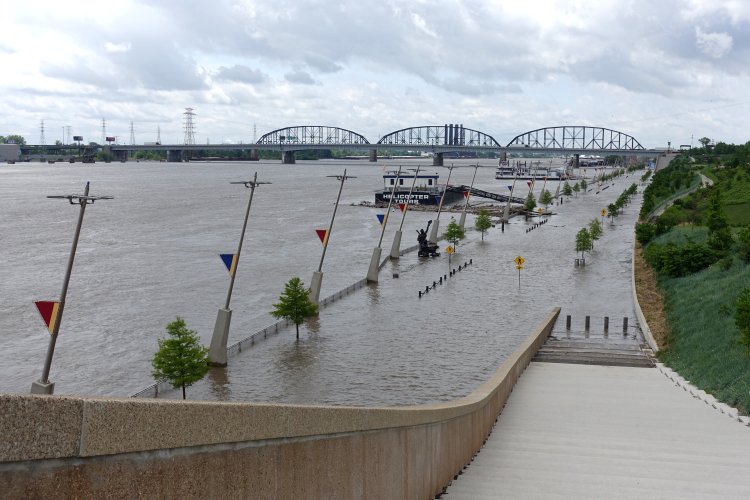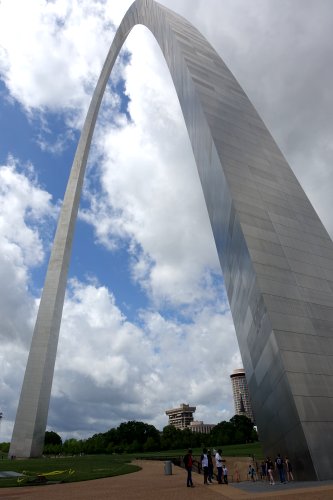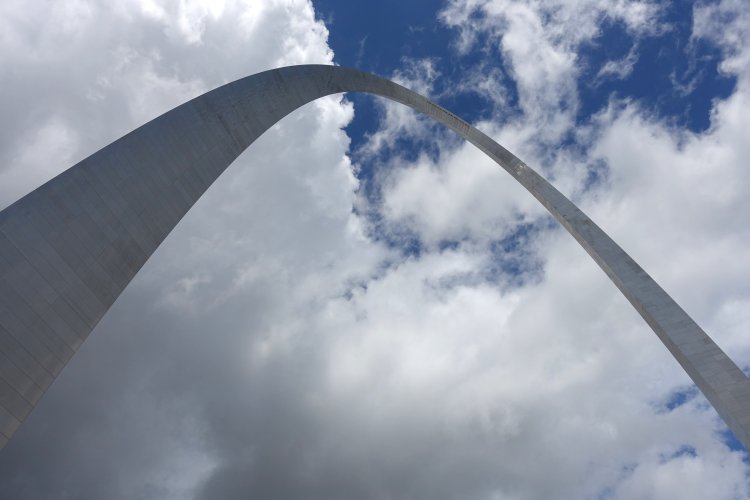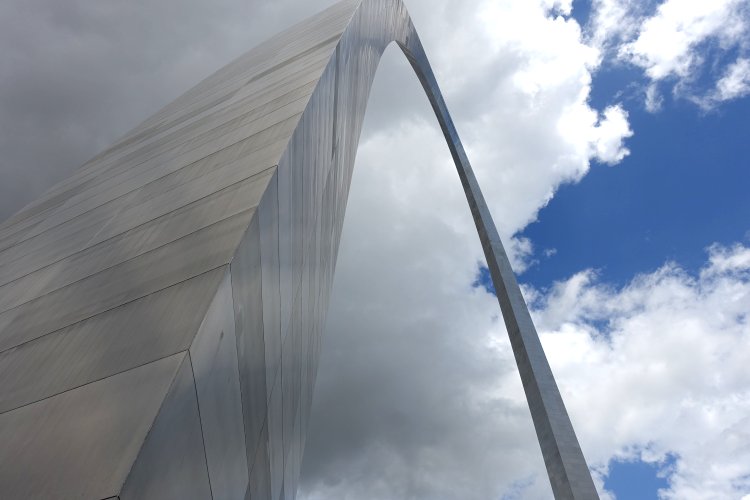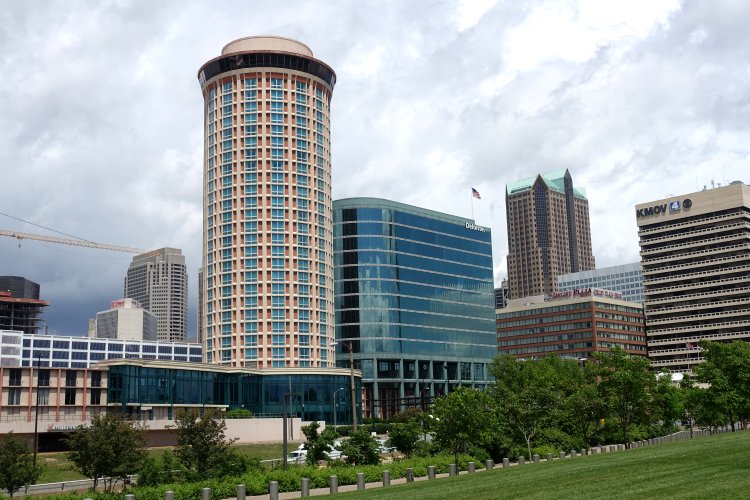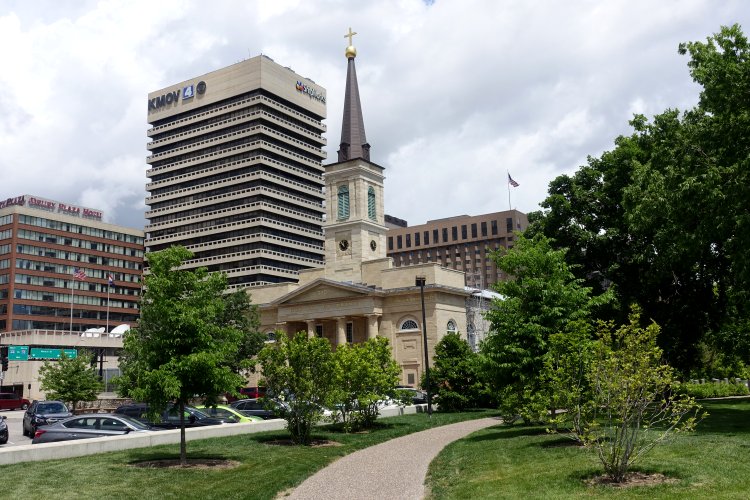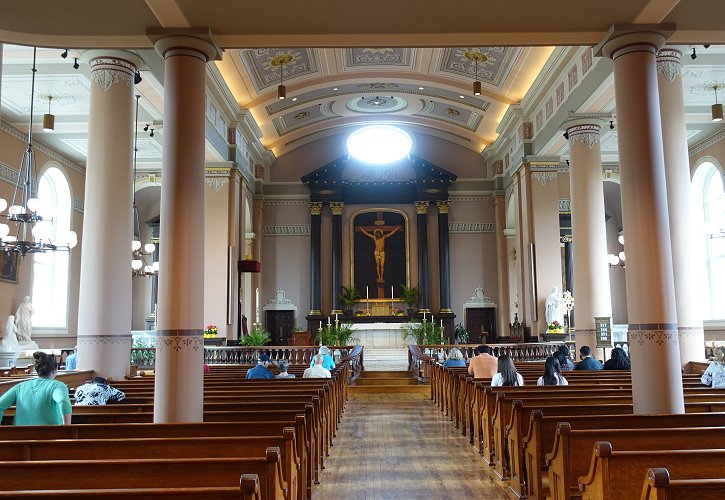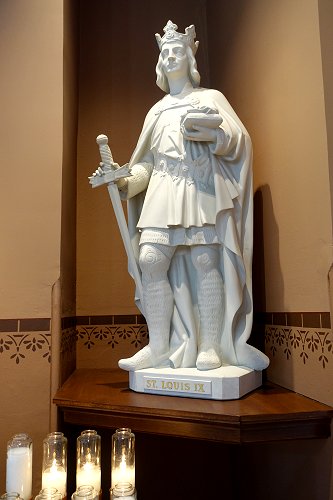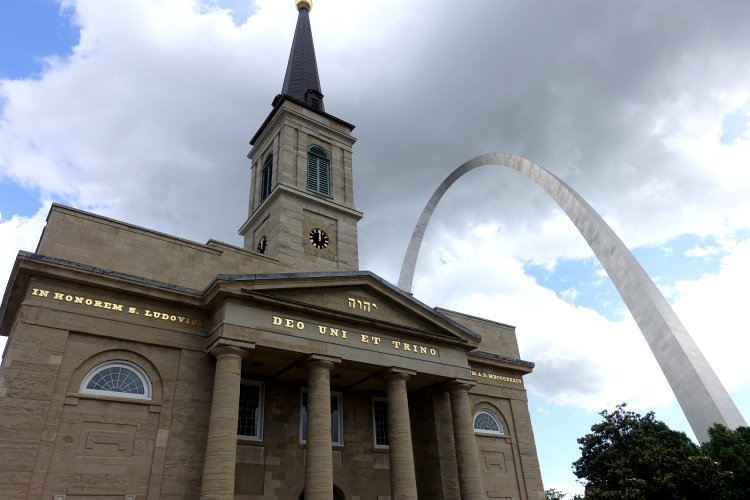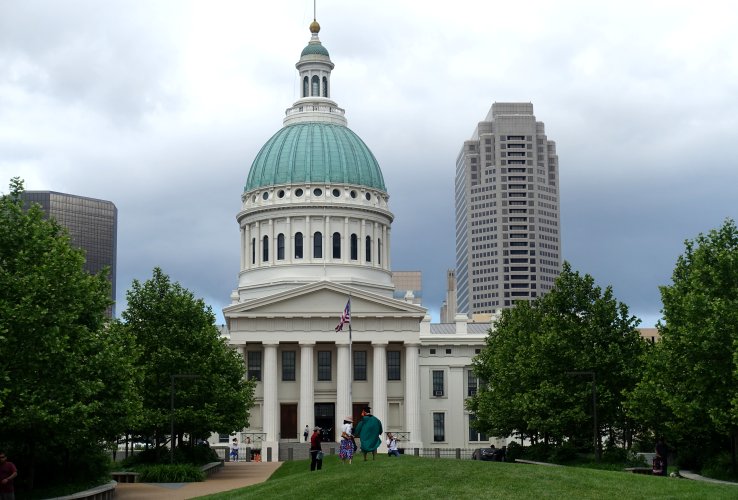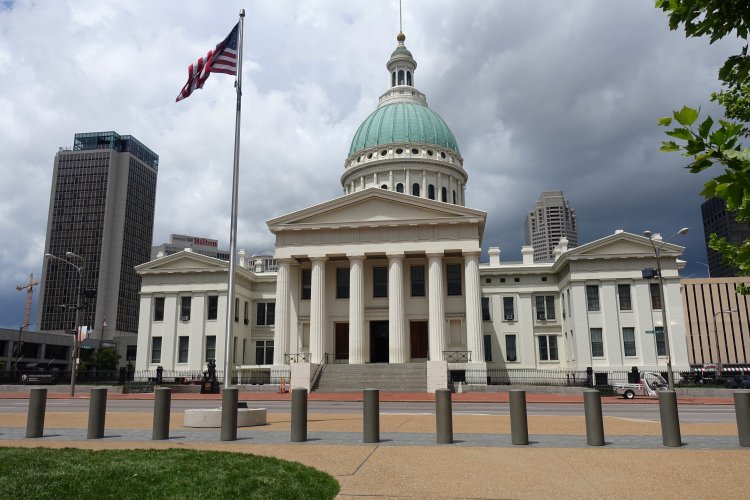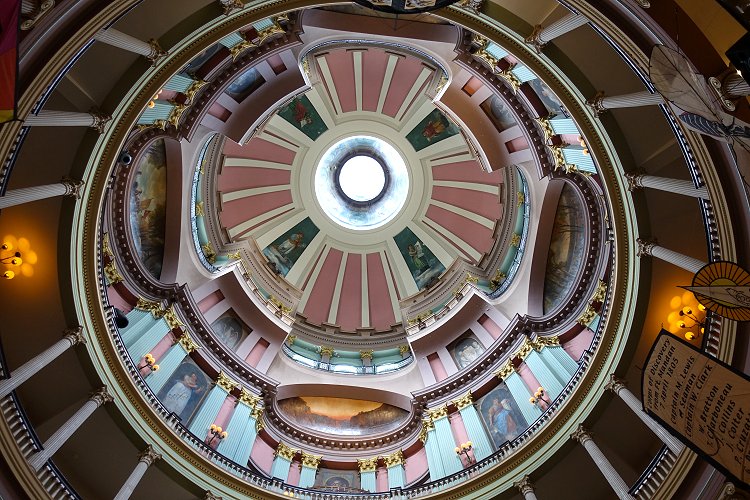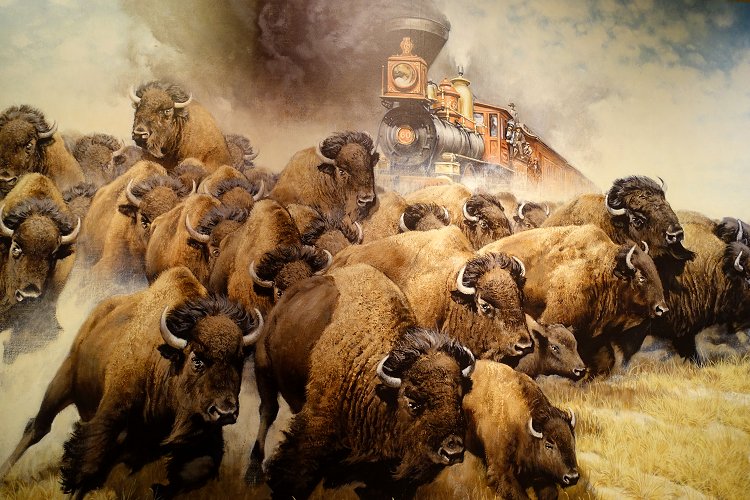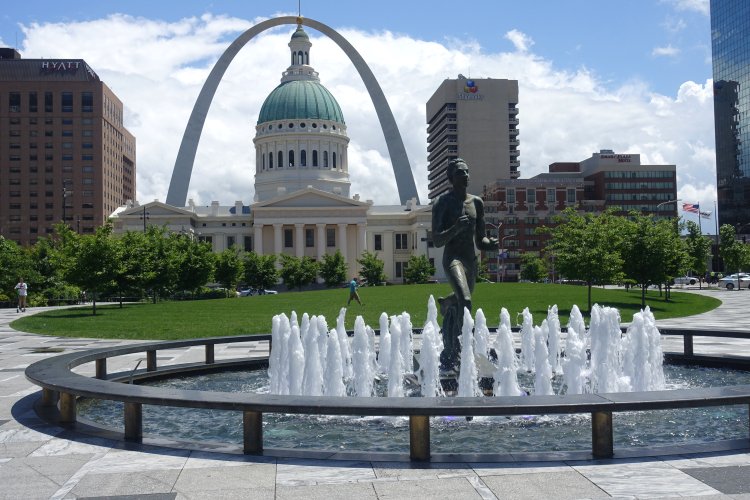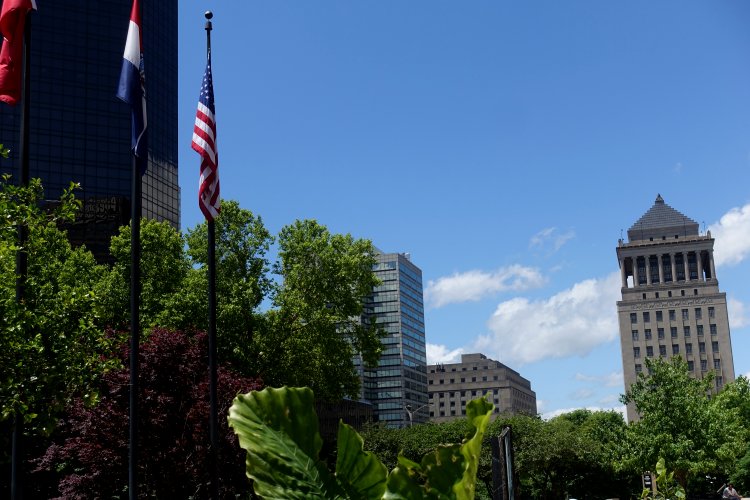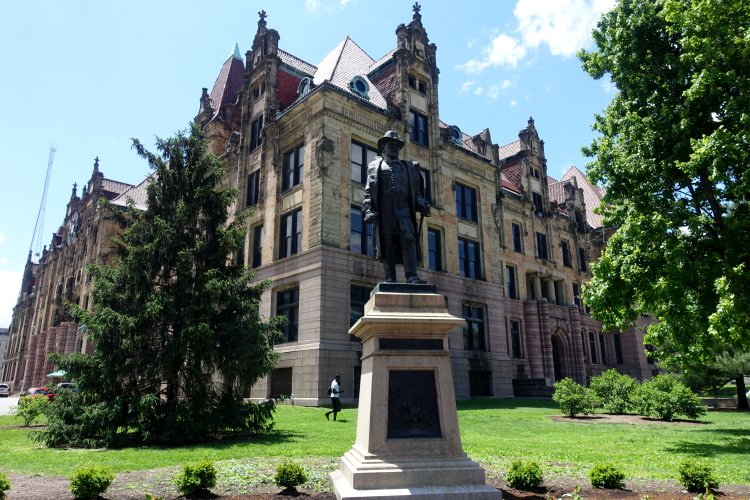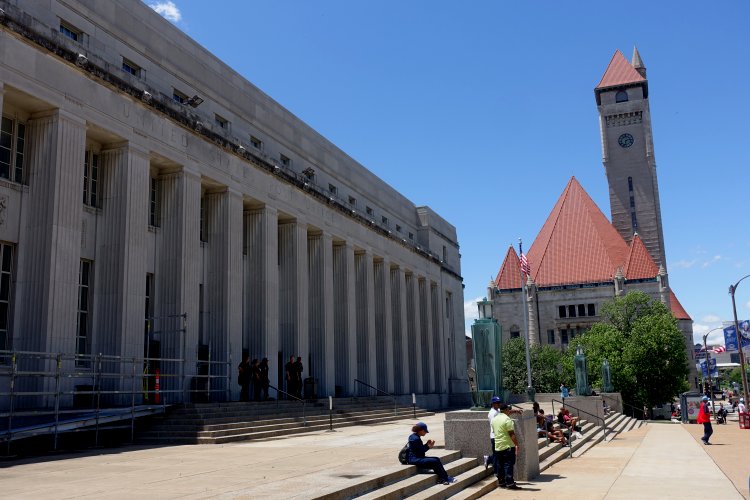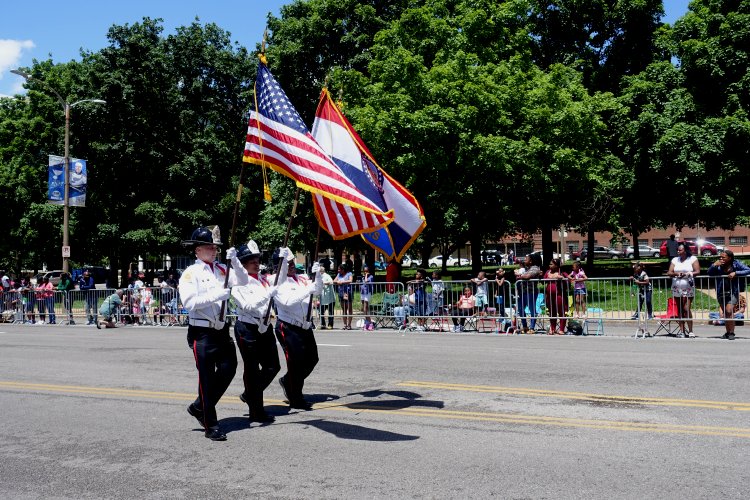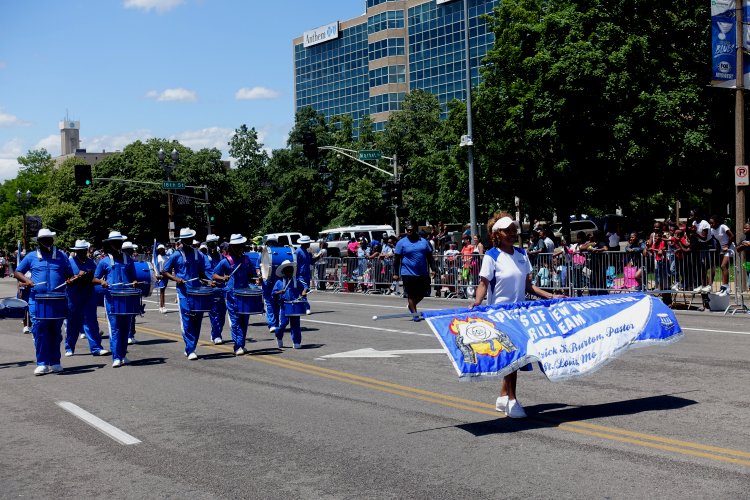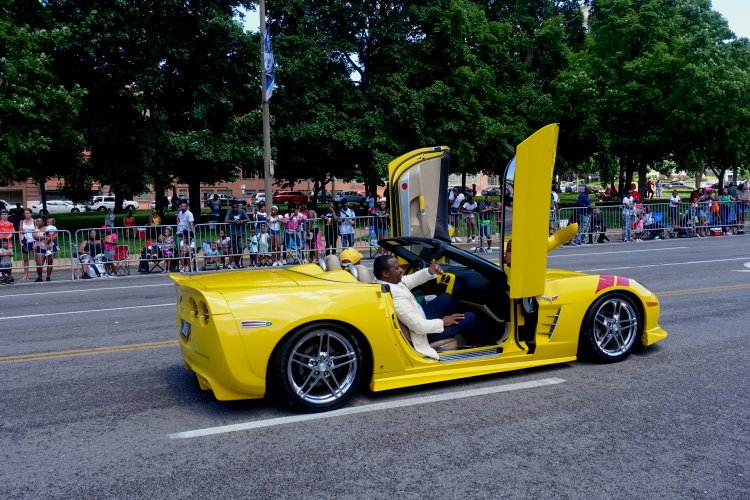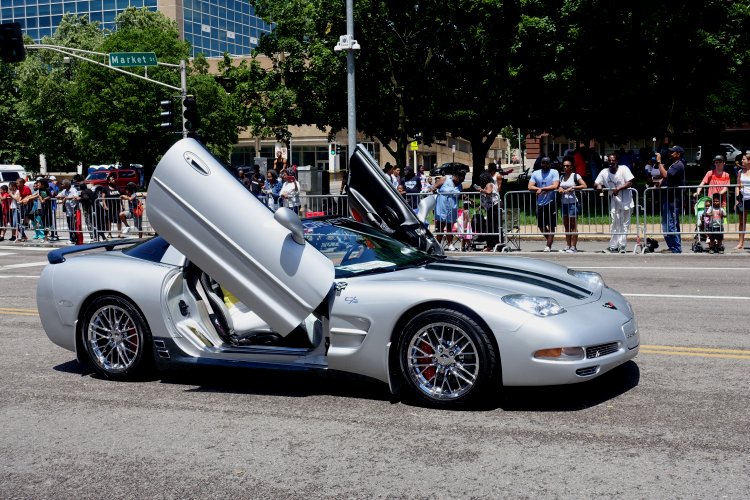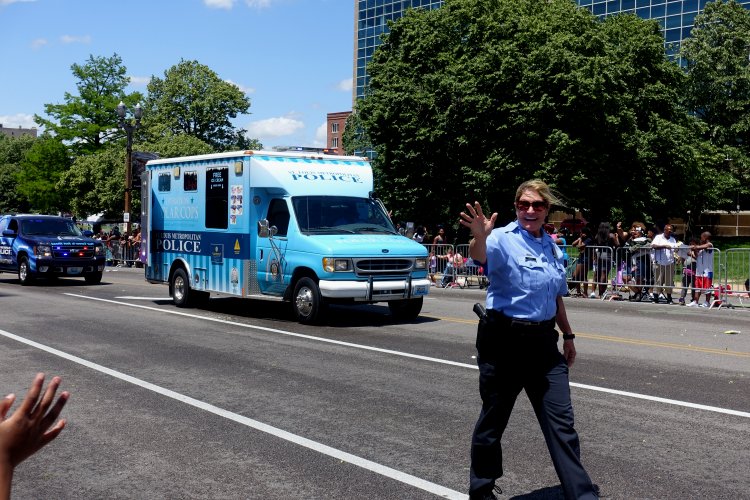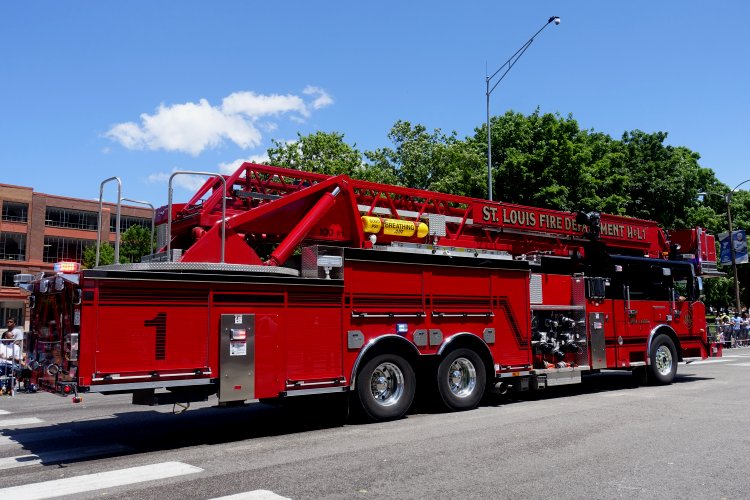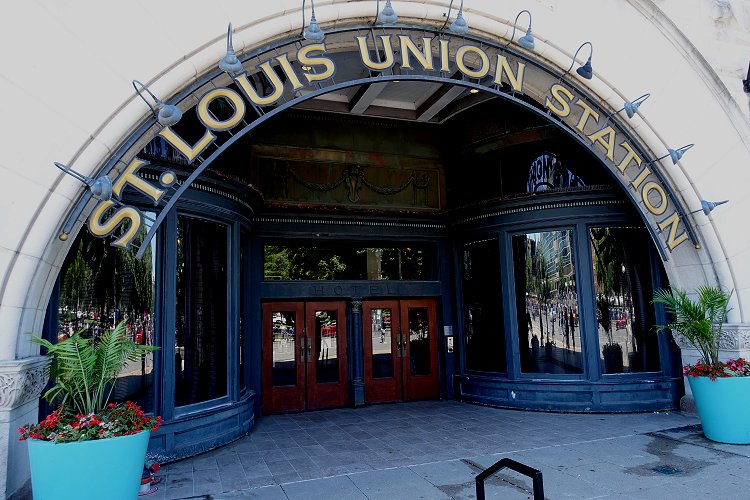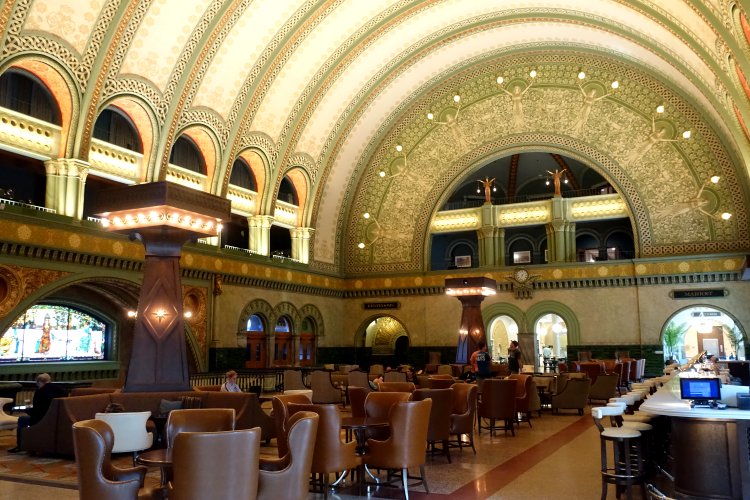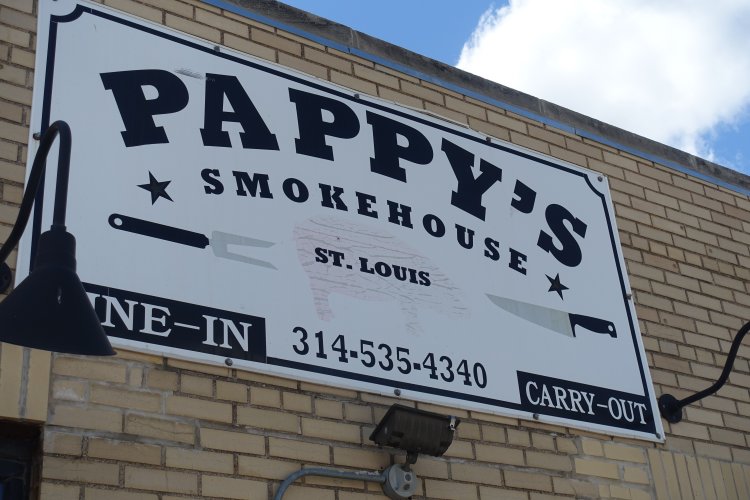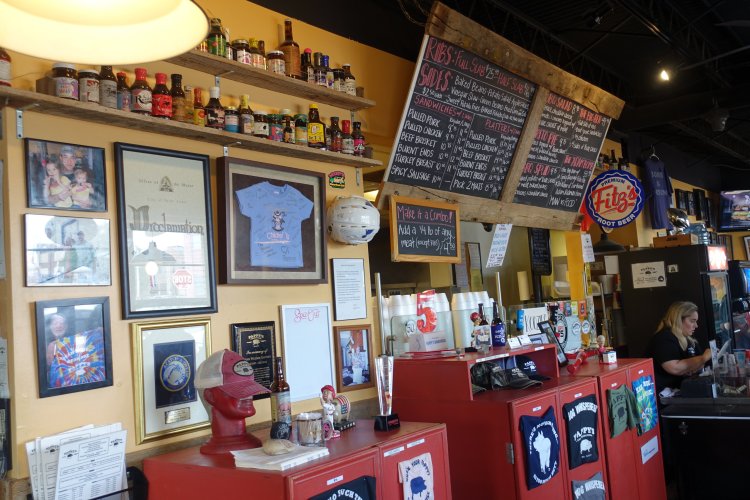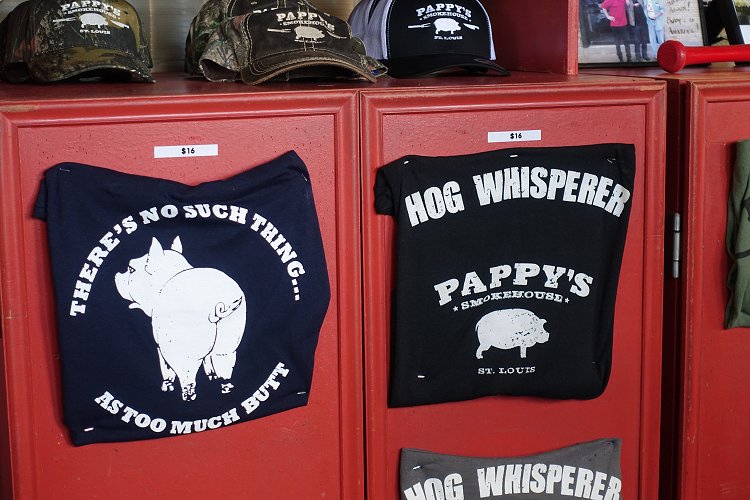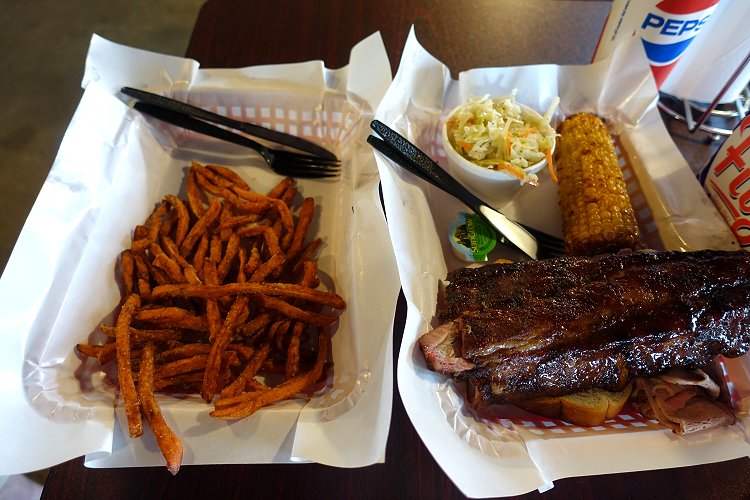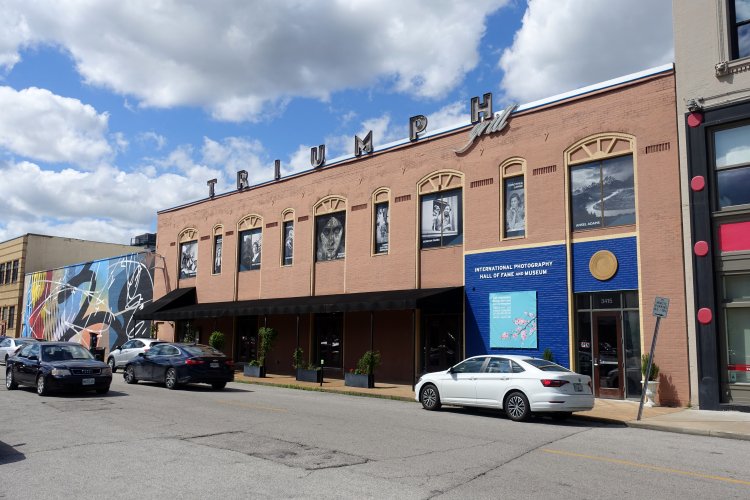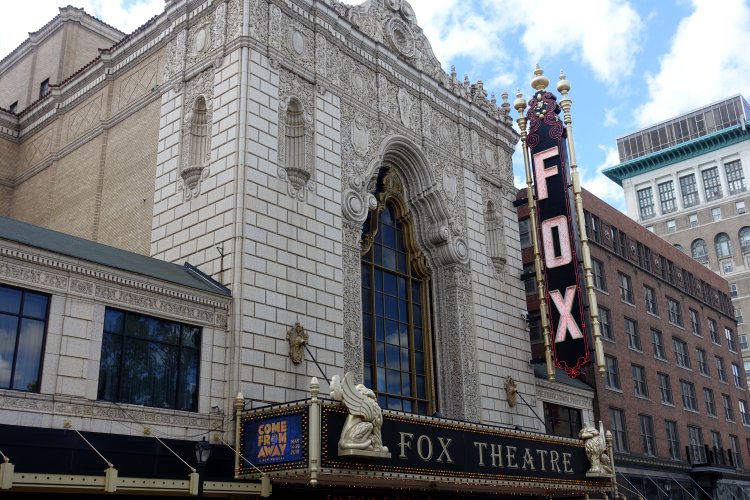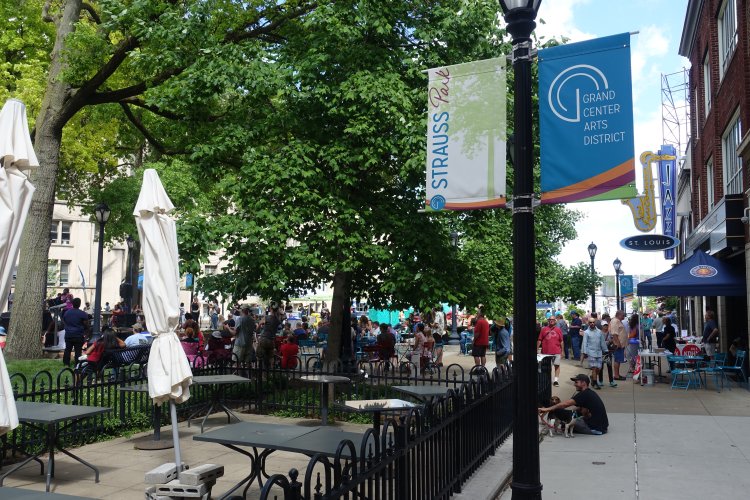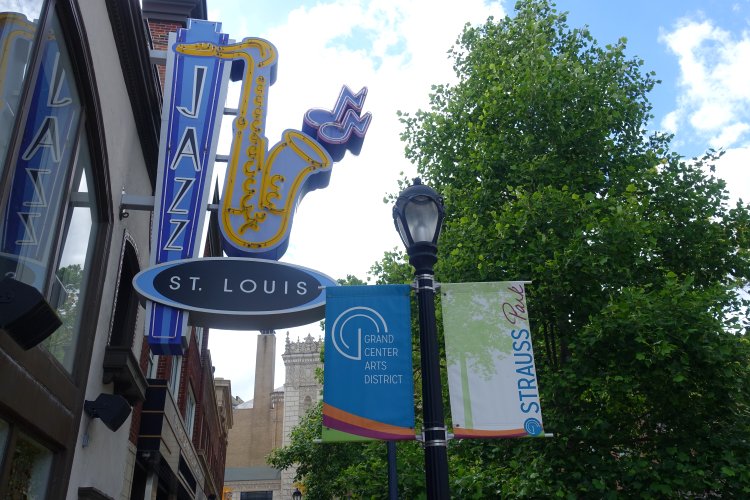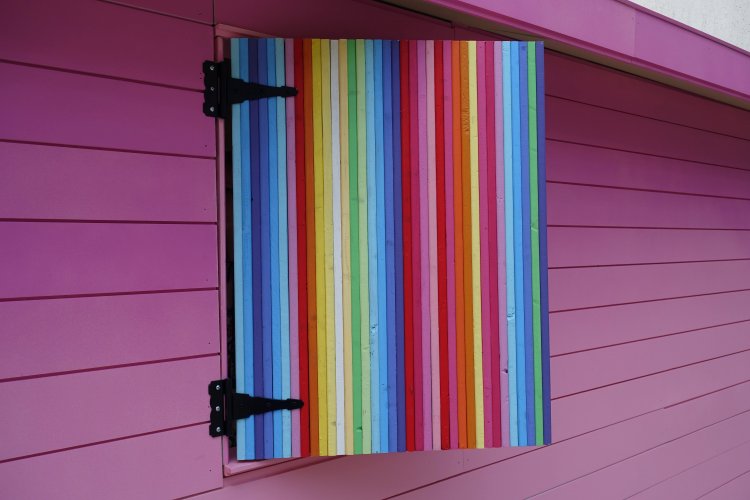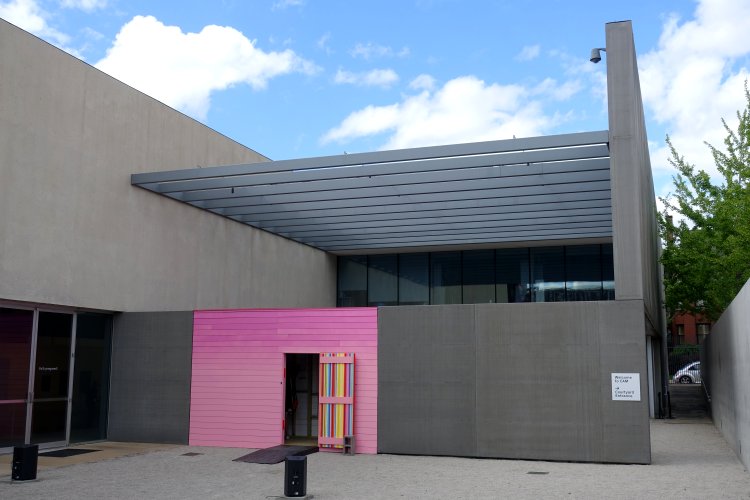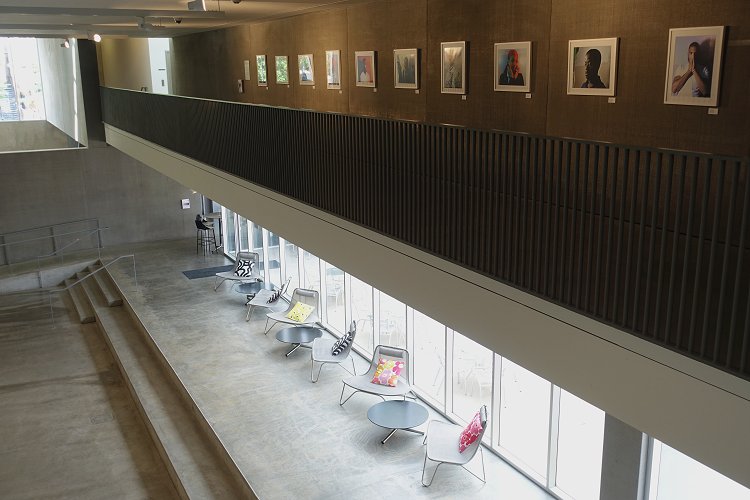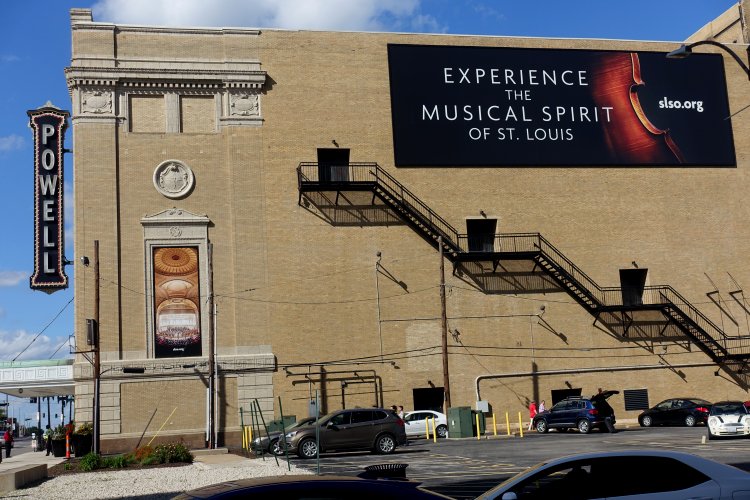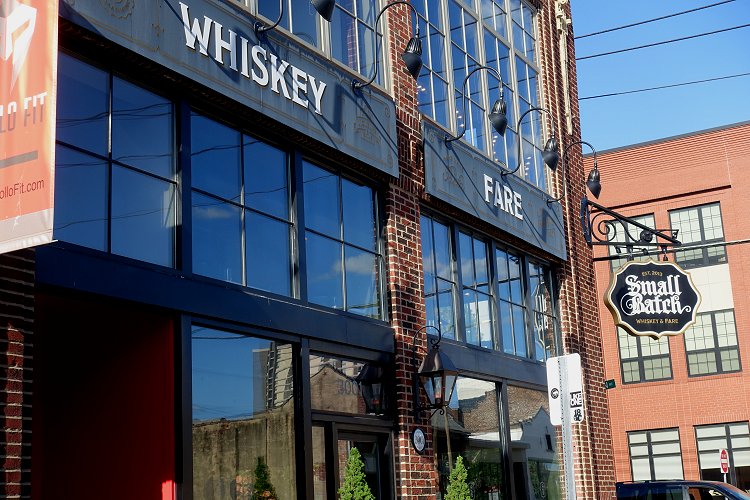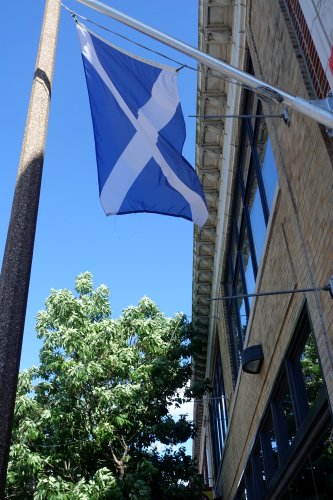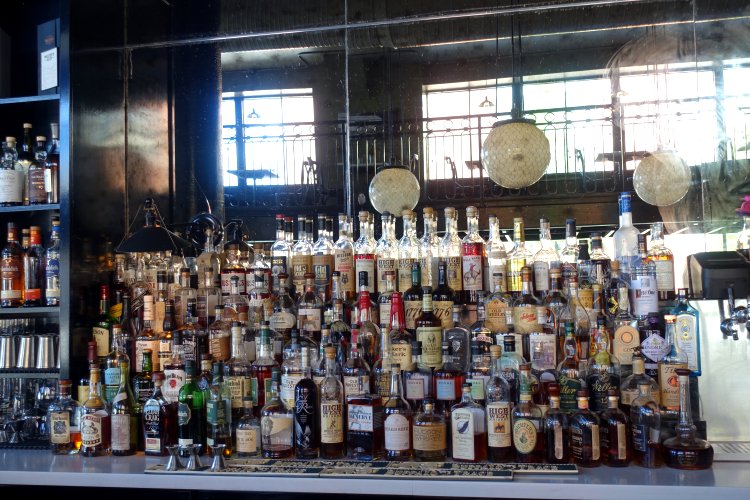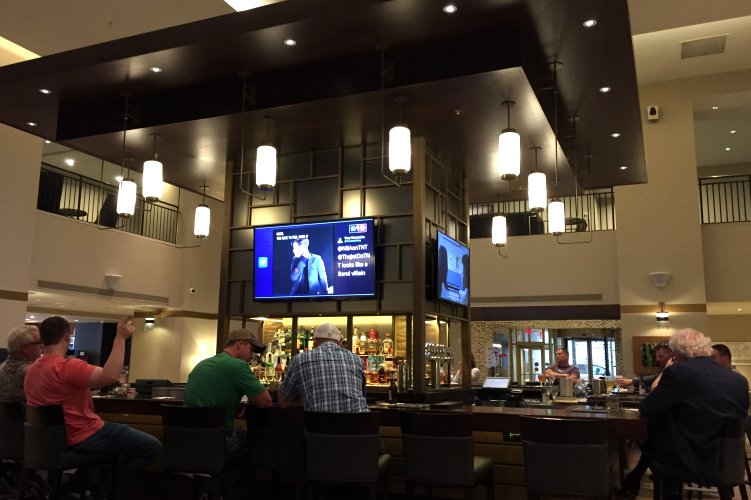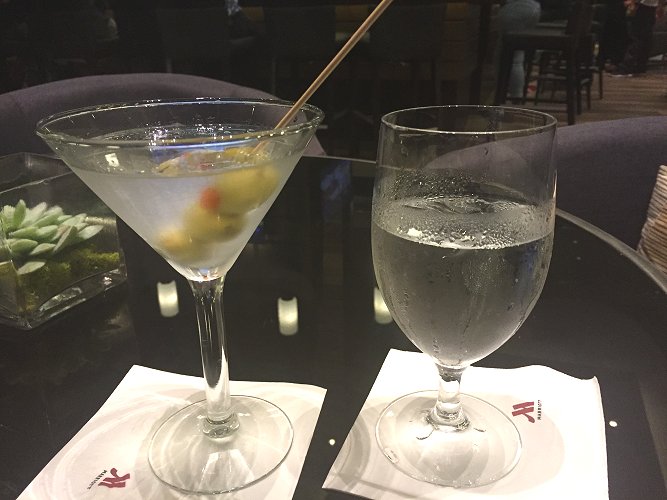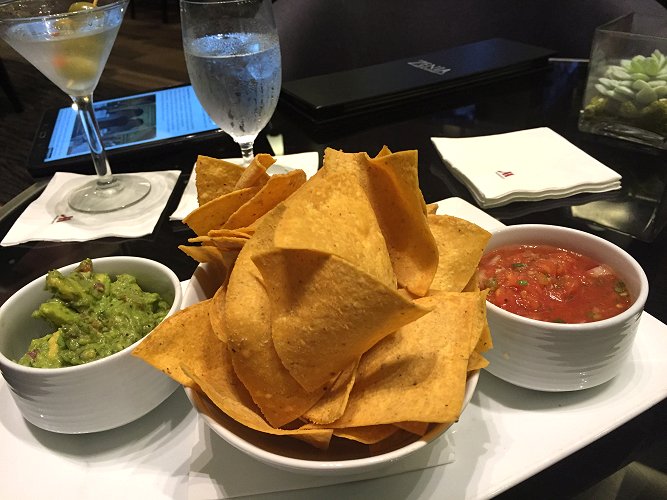Round The World and other travels
A frequent flyer's collection of trip diaries
This is: Amtrak Adventure 2019
Our St Louis half-marathon (nearly)
 We
began what would be a very busy day by having breakfast at a local,
independent coffee shop. It made a nice change from the familiar big
chains.
We
began what would be a very busy day by having breakfast at a local,
independent coffee shop. It made a nice change from the familiar big
chains.
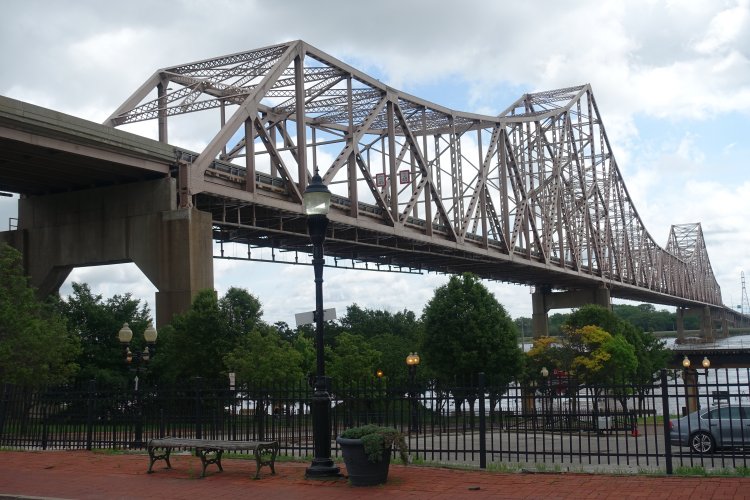 After getting organised, we set out for what would be a long day
getting to know St Louis. It
started easily enough, with a walk of just a few blocks to the area
properly known as Laclede's Landing, but better known locally as
simply the Landing. It is located directly north of Gateway Arch
National Park, on the west bank of the Mississippi. The
largely red-brick neighbourhood has a direct connection with the founding of St Louis
in the mid-18th century. When the Treaty of Paris (1763) ceded all
land east of the Mississippi to the British, many French-speaking people
in Illinois fled across the great river and settled at 'the
Landing'. While the history was undoubtedly interesting, a different
source of fascination for us was the much more recent damage caused to the
district by severe flooding.
After getting organised, we set out for what would be a long day
getting to know St Louis. It
started easily enough, with a walk of just a few blocks to the area
properly known as Laclede's Landing, but better known locally as
simply the Landing. It is located directly north of Gateway Arch
National Park, on the west bank of the Mississippi. The
largely red-brick neighbourhood has a direct connection with the founding of St Louis
in the mid-18th century. When the Treaty of Paris (1763) ceded all
land east of the Mississippi to the British, many French-speaking people
in Illinois fled across the great river and settled at 'the
Landing'. While the history was undoubtedly interesting, a different
source of fascination for us was the much more recent damage caused to the
district by severe flooding.
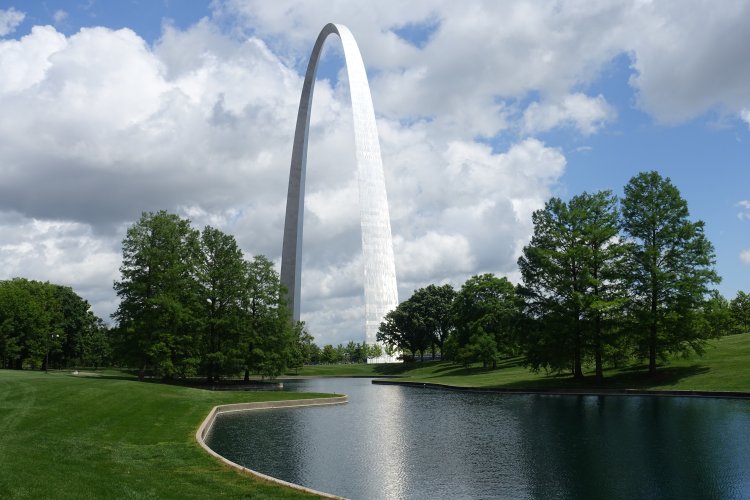 Located immediately south of Laclede's Landing in its own US
National Park, the iconic symbol of St Louis is the Gateway Arch.
Gateway to what?, you might ask. With the monument being
erected on the right bank of the great Mississippi, the answer is:
the American West. Built in the 1960s, the Gateway is the tallest
arch in the world. Its sheer size is breathtaking, as are the
effects of sunlight on its stainless steel surface.
Located immediately south of Laclede's Landing in its own US
National Park, the iconic symbol of St Louis is the Gateway Arch.
Gateway to what?, you might ask. With the monument being
erected on the right bank of the great Mississippi, the answer is:
the American West. Built in the 1960s, the Gateway is the tallest
arch in the world. Its sheer size is breathtaking, as are the
effects of sunlight on its stainless steel surface.
Also situated within the National Park, but not part of it, is a striking Catholic church. The Basilica of St Louis, King of France was built in the 1830s and served as the city's RC cathedral until it was replaced in this role in 1914. These days, it is relatively unusual in being part of the local archdiocese, yet having no territorial parish. Additionally, the National Park contains an even more imposing historic building, the Old Courthouse, now an exhibition space. It actually resembled a state capitol, except that St Louis is not the capital of Missouri; that honour belongs to Jefferson City, 125 miles to the west.
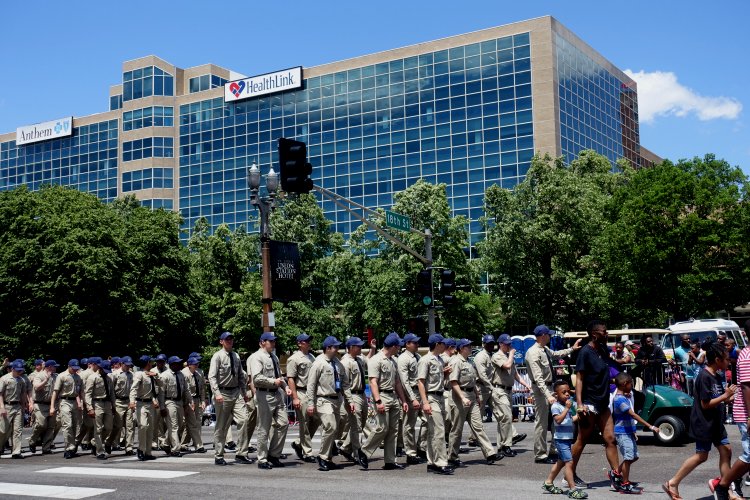 The next part of the day involved walking westwards, first along
Market Street and then along Olive Street. Our visit was taking place on
the day of the annual Annie Malone May Day Parade, and good-natured
crowds were lining the route on the Market Street section. Annie
Malone (1869-1957) was an African-American businesswoman, inventor
and philanthropist, and we couldn't help noticing that the crowds
who had turned out were almost entirely black. The route took us
past Union Station, now a hotel bearing the Curio by Hilton
brand, and we dropped in for a look and a small snack.
The next part of the day involved walking westwards, first along
Market Street and then along Olive Street. Our visit was taking place on
the day of the annual Annie Malone May Day Parade, and good-natured
crowds were lining the route on the Market Street section. Annie
Malone (1869-1957) was an African-American businesswoman, inventor
and philanthropist, and we couldn't help noticing that the crowds
who had turned out were almost entirely black. The route took us
past Union Station, now a hotel bearing the Curio by Hilton
brand, and we dropped in for a look and a small snack.
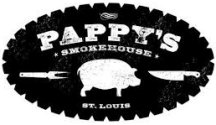
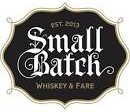 Our
(somewhat late) lunch stop was Pappy's Smokehouse, where we
enjoyed a tasty southern-style barbecue. Duly fortified, we
continued westwards to the Arts District, with a specific stop at
the Contemporary Arts Museum. To help break up the long walk back to
the Marriott Grand - a plausible excuse and I'm sticking to it - we
called in at a delightful bar on Locust Street, by the name of
Small Batch Whiskey & Fare. We struggled to choose from the
wide range of quality spirits on offer.
Our
(somewhat late) lunch stop was Pappy's Smokehouse, where we
enjoyed a tasty southern-style barbecue. Duly fortified, we
continued westwards to the Arts District, with a specific stop at
the Contemporary Arts Museum. To help break up the long walk back to
the Marriott Grand - a plausible excuse and I'm sticking to it - we
called in at a delightful bar on Locust Street, by the name of
Small Batch Whiskey & Fare. We struggled to choose from the
wide range of quality spirits on offer.
We eventually made it back to the hotel, where shockingly, our room had not been made up. Also a surprise, but in a nicer way, was the fact that my Fitbit and Bruce's Google Maps agreed that we had walked a quite astonishing 12.5 miles! After a well deserved rest, we spent the evening in the Marriott's lobby bar, indulging in cocktails and nibbles. We had no appetite for a more conventional dinner after our mid-afternoon meat-feast.
